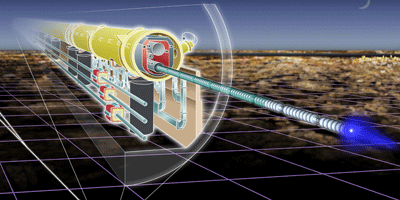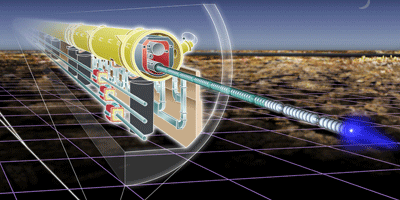Testing Quantum Gravity with Accelerators
To figure out how the smoothness of gravity can coexist with the intrinsically grainy world predicted by quantum field theory, physicists have to be able to explore physical phenomena at extremely short distances. According to Vahagn Gharibyan, a scientist working at the German Electron Synchrotron (DESY), the tools to make these measurements exist, or soon will. He proposes that subtle changes to the refraction of light, predicted by certain theories of quantum gravity, could be measured using lasers and the relativistic electrons generated at high-energy electron accelerators.
General relativity, which accurately describes the motion of massive bodies like planets and galaxies, is believed to break down on distances close to the Planck length of x meters. Attempts at tweaking the equations of light to account for gravitational effects therefore add terms that only become significant at these distances, in some cases predicting an index of refraction for light in vacuum that is different than . But even the highest-energy particle accelerators in existence today only probe space on a scale of meters—far too large to observe these effects.
Gharibyan believes the breakdown of general relativity could be seen in a classic Compton scattering experiment, in which a photon scatters from an electron, shifting frequency in the process. In an earlier paper, he related the photon’s scattering angle and frequency to the refractive index of the surrounding medium. In his new work in Physical Review Letters, Gharibyan calculates the sensitivity of such an experiment to quantum gravitational effects, assuming the photons are provided by conventional lasers, and highly relativistic electrons are produced by PETRA III, an existing storage ring, or the planned International Linear Collider. – Jessica Thomas





